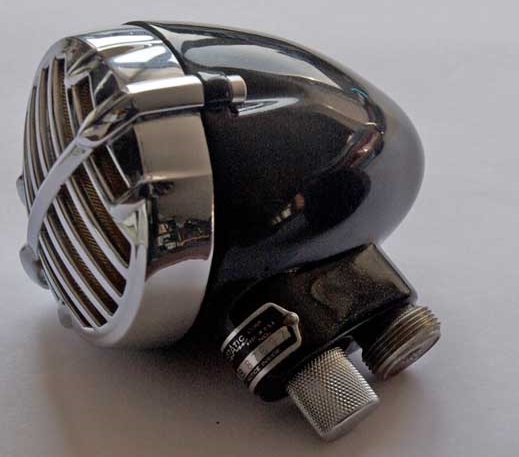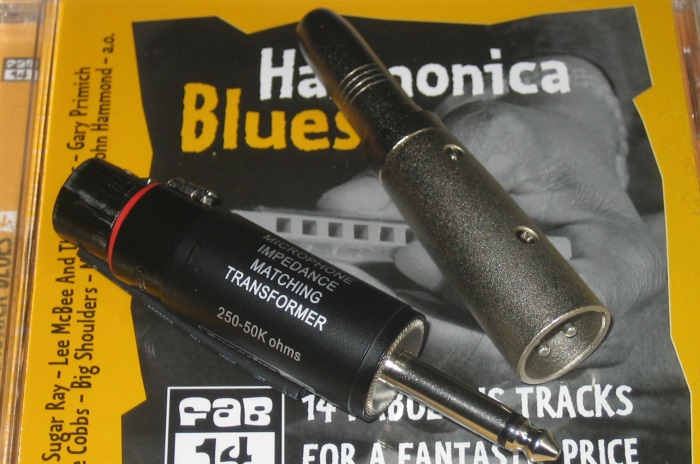Microphones for harp
The variety of microphones unsettles not only the novice. You hear so many things from the horse's mouth. There is a lot confusing stuff, misunderstood or unreflective retelled stuff and a lot of wrong stuff. You can also get the feeling, you have to own many microphones, because players often compensate the "error" of the amplifier with the "errors" of the microphone, and rise this to religion. But fortunately it is not as difficult as it seems to find a way through the thicket.
The Astatic in the picture is probably the most popular form of a Bullet. But the fragile crystal capsules are often swapped for CR or CM capsules of the Shure company. Here you can spend lots of money for old rarities.
On my "old website", there was a large comparative test with sound examples. But that has only shown that microphones are quite close one to another and that sound samples on the PC have little significance.
Bullet or stem mic
The "bicycle lamps" or "Bullets" have these names, because they look similar to these objects. Handling them often begins with difficulties, but it's just a matter of practice and maybe has advantages for the sound design. You do not need big hands to cope with it, the image of my hand with a small 0.33l PET bottle (d=5 cm). And I have no problems with "the fat Shure". Meanwhile, there are quite handy Bullets on the market, BBHarpy builds its Vintager and Greg Heumann placed his Bulletini on the market in 2015.
Who has small hands or rather play acoustically, perhaps even wants to sing into the harp microphone, is probably taking a vocal microphone. Especially the Shure SM57 (and its various copies) is well-tried, because it has a small basket. But also the players that look for a dirty "Chicago Sound", can use these types, with funnel top, we are back to the bullet character.
High impedance? What is impedance?
By "highly resistive" (high impedance, high-Z) is meant in this context that the microphone which converts air vibrations into a voltage of high amplitude, up to 15 times higher than e.g. the signal of a guitar, for which the amplifiers usually are designed. You can overdrive the amplifier very quickly, what is described by many players as the characteristic sound. However, it also leads to howling feedback which often spoils the harp player's fun.
Today a vocal microphone is mostly a low impedance (low Z) and provides a balanced XLR connector. The signal has less amplitude, the sound is fairly neutral and "acoustic". This is not always desirable for the purposes of the harp player. But you can increase the voltage by a small transformers (impedance transformer), there's enough "power reserves" from the signal.
Many supposedly "high-Z" microphones have normal vocal capsules with small transformer inside. Might not be negative.


